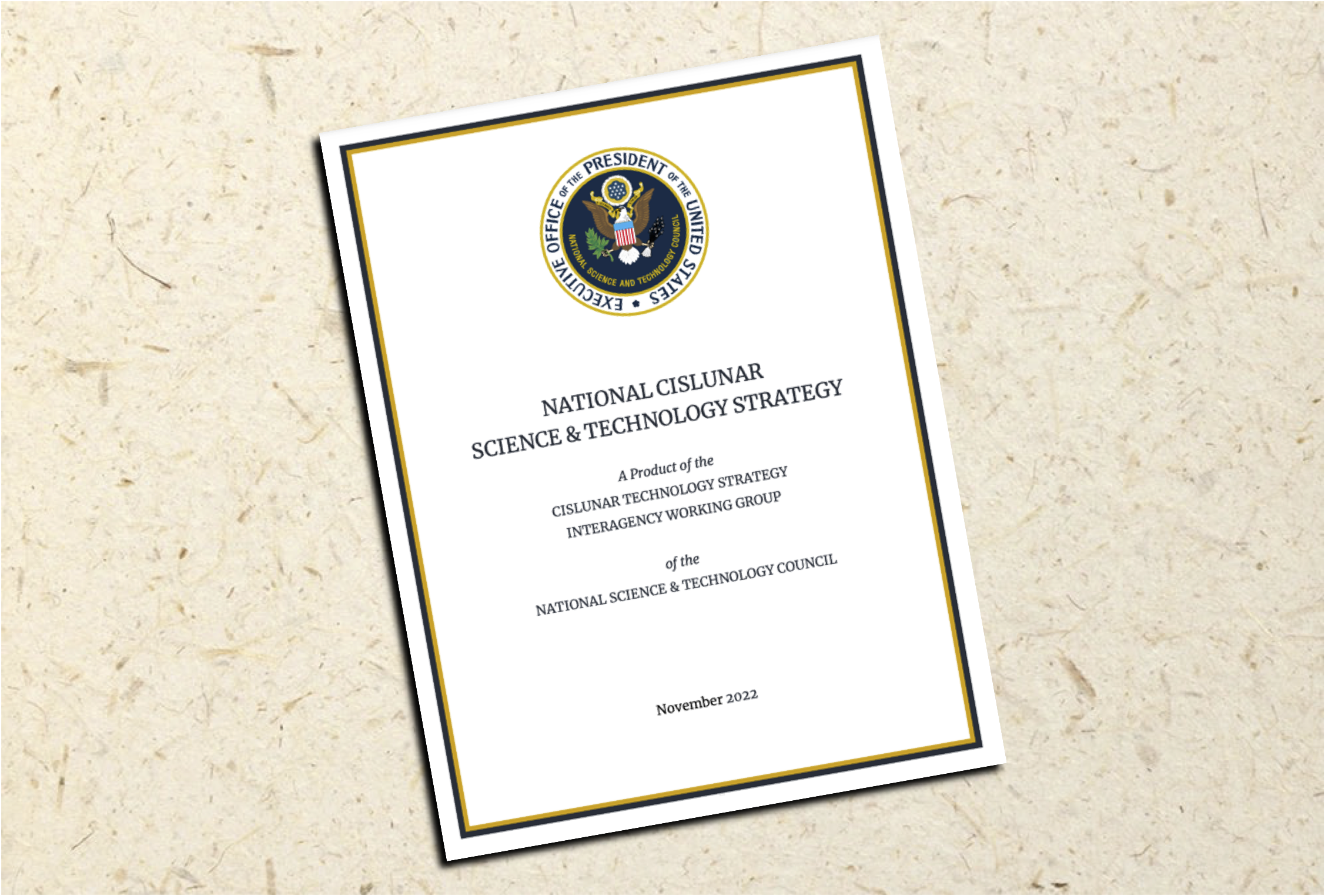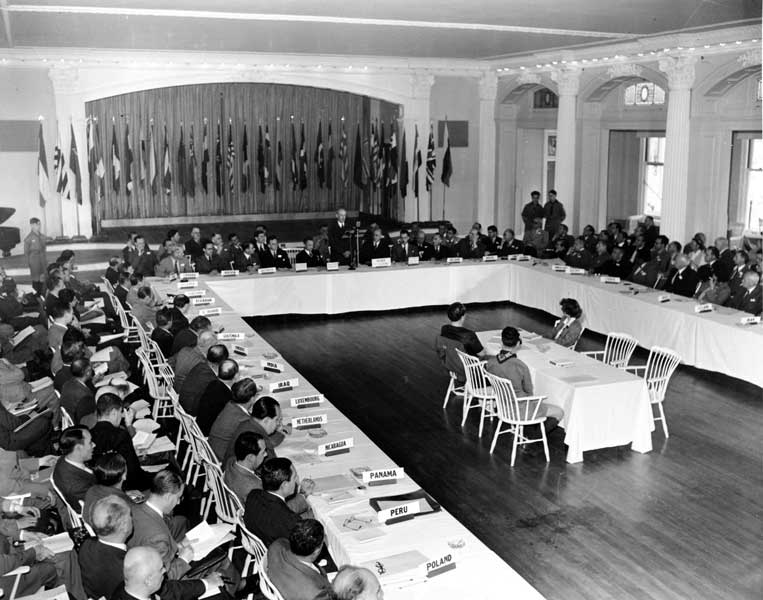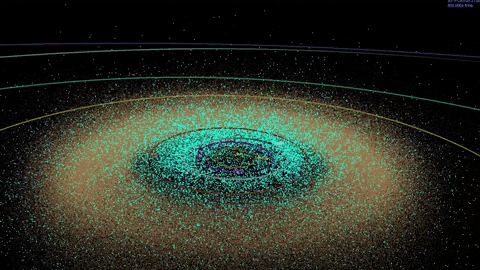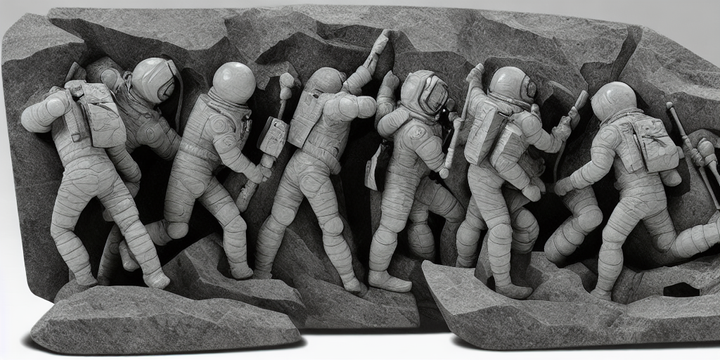White House Cislunar Tech Strategy Part 1 - National Diplomatic Spacepower
The recent White House Cislunar S&T Strategy articulates plans for the Moon. What does this mean for national diplomatic spacepower?

Discussions on national spacepower often revolve around military or information spacepower. What about national diplomatic and economic spacepower? This article (Part 1) examines the November 2022 White House National Cislunar Science & Technology (S&T) Strategy document for implications on national diplomatic spacepower for the United States. In Part 2 I'll discuss impacts on national economic spacepower. With respect to national diplomatic spacepower, we find:
The White House has taken a mix of traditional and new talking points to shape the diplomatic field in Cislunar space. Space is viewed as a sanctuary, the rules based international order is promoted, Cislunar space sustainability is emphasized, mutually beneficial international technical efforts are proposed, and long-term human space habitation questions are posed. In general these five principal themes strengthen United States diplomatic spacepower.
To arrive at this conclusion we need to understand 1) what motivates the White House Cislunar S&T Strategy, 2) articulated objectives in the strategy, and 3) how national diplomatic spacepower is affected.
Ad Luna!
1) What Motivates the White House Cislunar S&T Strategy?
Cislunar space exploration and economic expansion are topics near and dear to my heart. Much of my own university lab research is focused on investigating and developing cislunar astronautics technologies. In the strategy document itself, 'Cislunar' is defined as follows:
"Cislunar space is the three-dimensional volume of space beyond Earth’s geosynchronous orbit that is mainly under the gravitational influence of the Earth and/or the Moon. Cislunar space includes the Earth-Moon Lagrange point regions [...], trajectories utilizing those regions, and the Lunar surface." (pg. 3, National Cislunar S&T Strategy)

Perhaps the shortest summary of the motivation behind the strategy is given in the conclusion:
"Cislunar space is a new sphere of human activity, which offers opportunities to advance scientific understanding, exploration, and economic growth." (pg. 13, National Cislunar S&T Strategy)
Expanding on this motivation, it states:
"The growth of current and planned activities in Cislunar space is driven by decreasing launch costs, advanced and increasingly commodified space technologies, growing commercial interest in space activities, new missions by national space programs that are motivated by national and geopolitical ambitions, and the utility of Cislunar activities as a programmatic step toward some future missions into the solar system.." (pg. 4, National Cislunar S&T Strategy)
There we have it. Commercial feasibility, national and geopolitical ambitions, and the geography of space are combining to make the Moon and it's environs not just feasible, but desirable.

The remainder of the Cislunar S&T strategy document is organized around four objectives.
2) Four Cislunar S&T Strategy Objectives
The barest summaries of these objectives are given here. The focus of this article is how these objectives impact instruments of national power - particularly national diplomatic and economic spacepower. Given this lens I will (very) briefly review the remainder of the 13-page Cislunar S&T Strategy, which is organized by objectives.
"Objective 1: Support research and development to enable long-term growth in Cislunar space." (pg. 2, National Cislunar S&T Strategy)
This includes several sub-objectives:
"(1) R&D to enable enduring human presence, (2) R&D to best utilize Cislunar space for science, and (3) programs needed to ensure availability and readiness of a skilled workforce [...]." (pg. 7, National Cislunar S&T Strategy)
Much of the content of Objective 1 is centered around developing astronautics technology and societal structure. The purpose is to enable long-term human habitation... no - thriving in space and the workforce to see it done.
"Objective 2: Expand international S&T cooperation in Cislunar space." (pg. 2, National Cislunar S&T Strategy)
In Objective 2 multi-lateral international cooperative endeavors to jointly explore and expand to the moon are articulated. It discusses the Artemis Accords, spaceflight operations & safety, rules-based cooperation, and norms of behavior.
"Objective 3: Extend U.S. space situational awareness capabilities into Cislunar space." (pg. 2, National Cislunar S&T Strategy)
Extending Space Situational Awareness (SSA) into Cislunar space is the entire focus of Objective 3.
We should pause a moment and reflect on why developing and deploying Cislunar SSA technologies and systems isn't simply part of Objective 1 - astronautics technology and long-term human habitation.
Recall, the purpose of SDA is to enable decision-making on short-, medium-, and long-timescales. We cannot render good decisions without understanding the past, current, and likely future state of the space domain. Cislunar SDA is separated and emphasized as its own objective because it is one of the most important astronautics technologies to enable national decision-making in Cislunar space.
I'll briefly emphasize that SDA is a foundational to national information spacepower; it supports and is complementary to national diplomatic, economic, and military spacepower.
There is much fodder here for other articles, but for now I'm moving on.
"Objective 4: Implement Cislunar communications and positioning, navigation, and timing capabilities with scalable and interoperable approaches." (pg. 2, 3, National Cislunar S&T Strategy)
The purpose of Objective 4 is to build the foundational Cislunar infrastructure that enables all of the other objectives. With infrastructure for navigation, communications, and timing each spacecraft or system can focus on its mission. Commercial enterprises can focus on profits. International cooperation is facilitated. Cislunar infrastructure is necessary to pursue all other objectives.
Having ever so quickly reviewed the contents of the Cislunar S&T Strategy, we now turn our attention to synthesis. How do the specific imperatives laid out impact United States national spacepower?
Let's set our sights upon national diplomatic spacepower first.
3) Impact on National Diplomatic Spacepower
There are five themes related to national diplomatic spacepower spread throughout the strategy.

Support for the Space Sanctuary School of Spacepower Theory
Having just written an article about whether space is a sanctuary, I note that the Sanctuary School of Spacepower Theory is alive and well. Rumors of its abandonment have been greatly exaggerated.
"The United States will lead the world in responsible, peaceful, and sustainable exploration and utilization of Cislunar space, including the Moon [...]." (pg. 2, National Cislunar S&T Strategy)
This continues the approach initially taken by the Eisenhower Administration 80 years ago. It's clear that the spirit of the 1967 Outer Space Treaty and recent Artemis Accords are baked into the policy cake, as it were. After emphasizing that all four objectives of the Cislunar S&T Strategy support this purpose, it continues to say:
"This strategy is designed to be fully consistent with those agreements as well as other non-legally binding instruments that are applicable to Cislunar space. Particularly relevant to this strategy are the Outer Space Treaty of 1967, the Rescue Agreement of 1968, the Registration Convention, the Liability Convention, the ITU Radio Regulations, the Artemis Accords, additional efforts of the United Nations Committee on Peaceful Uses of Outer Space (COPUOS), and other ongoing multilateral discussions and international treaties." (pg. 6, 7, National Cislunar S&T Strategy)
That's a strong exclamation mark. It's followed by a supporting and related diplomatic effort.
Rules-Based Order and Norms of Behavior
The Bretton Woods monetary system agreements in 1944 (one month after D-Day) set the foundations for the international world order we know today. Imperial and mercantilistic trade systems gave way to nearly a century of open and free trade amongst nations. While Breton Woods has been substantially modified over the years, this is the most successful economic system ever implemented.

One year later in 1945 the United Nations was founded, complementing the new Breton Woods monetary system. Centered around ensuring peace and rules-based order, many of the norms of behavior, laws of the sea, and other features of the modern world trace their birth to these two events.
Will they propagate to Cislunar space?
"The United States continues to engage the international community to uphold and strengthen a rules based international order for space, including in Cislunar space." (pg. 6, National Cislunar S&T Strategy)
The United States unequivocally supports expanding a rules based international order to Cislunar space. Does this mean exporting our existing systems wholesale to Cislunar space? I'm not sure. But leading the effort to avoid the mercantilism and imperialism of the pre-World War 2 world seems like an excellent use of national diplomatic spacepower to me.
(Cislunar) Space Sustainability
Space debris and space environmentalism have been increasingly in the public eye over the past 20 years. My collaborator and colleague Dr. Moriba Jah has made commendable efforts to participate in UN COPUOUS and other venues to raise awareness and address space sustainability issues. Both Dr. Jah and I have given congressional testimony on space sustainability and space traffic management.
Space debris in Earth-centric orbits is an excellent topic for another time. For now, I'll keep on-topic and point the spotlight at the following passage:
"Near-term Cislunar enabling capabilities will need to be transparent, open, interoperable, and scalable to advance a Cislunar ecosystem that is sustainable for years to come." (pg. 6, National Cislunar S&T Strategy)
This aspirational norm-setting is a productive use of diplomatic spacepower, and has the potential to increase the strength of diplomatic spacepower for a number of nations.

Transparency and interoperability depends greatly upon development of Cislunar SDA capabilities, as well as multilateral cooperation on standards, formats, and analyses. The NASA Planetary Defense Coordination Office (PDCO) is a great example and prototype of how this can be done. Speaking of which...
Spaceflight Safety and Planetary Defense
Dovetailing with Cislunar space sustainability is spaceflight safety - they're two sides of the same coin, in many respects.
The Cislunar S&T Strategy says:
"Develop technical foundations of best practices for safe Cislunar spaceflight operations." (pg. 10, National Cislunar S&T Strategy)
and
"[T]he U.S. government will lead development of best practices for safe and predictable operations in Cislunar space and Lunar orbit." (pg. 10, National Cislunar S&T Strategy)
In this context, safe and predictable operations includes executing transfer trajectories, inserting into repeating natural orbits (e.g., Lyapunov, Halo), stationkeeping in and around Lagrange points, entering low-Lunar orbit, and landing on the Moon itself. Close approaches, rendezvous, and docking merit particular focus.
Together, these functions are extensions and generalizations of Earth-focused Civil Space Traffic Management (STM). From a national diplomatic spacepower perspective, setting norms early helps to ensure spaceflight safety and is also a strong negotiating position against bad actors.
In addition to spaceflight safety, there are many international efforts that will be extended to Cislunar space:
"Ongoing space activities like planetary defense, space weather research and monitoring, orbital debris mitigation, and space- and ground-based astronomy could begin to extend coordination to include consideration of new Cislunar development activities." (pg. 13, National Cislunar S&T Strategy)

Strengthening and codifying these cooperative and mutually beneficial international activities builds a strong foundation for continued United States diplomatic spacepower.
Ethics of Long-Term Human Space Expansion
One of the more profound questions raised relates to long-term human space expansion and resulting ethical questions.
"Many unresolved issues regarding space exploration cannot be solved through engineering alone, such as the guiding ethics of human expansion into space, long-term cooperative models for space development, and equitable governance structures for space communities. The United States will enable and support research in the social sciences to advance our understanding of these issues." (pg. 8, National Cislunar S&T Strategy)
What governance structures should be used in space communities? How can communities cooperate between and amongst themselves in space? How do they interact with terrestrial governments? What are fundamental human rights in space? What degree of self-determination is appropriate? What legal codes should apply in space?

The strategy rightfully raises these questions and suggests that social sciences need to investigate them. Many space expansion advocates, myself included, went into the hard sciences because of our enthusiasm and ardor for how space can improve the human condition. Ethicists, philosophers, and political science experts (among others) should be brought into the discussion. Posing fundamental questions related to ethics of long-term human space expansion is perhaps the most surprising yet innovative element of the Cislunar S&T Strategy contributing to national diplomatic spacepower.
Summary
Our close reading of the 2022 White House Cislunar S&T Strategy allows us to carefully consider how the United States diplomatic spacepower is affected. In particular:
- The Sanctuary School of spacepower theory is propagated. The Artemis Accords, Outer Space Treaty, and others continue to form the foundation of American diplomatic spacepower.
- The rules based international order is promoted. This should be no surprise, as the Breton Woods legacy and the United Nations (amongst many other) institutions have formed the basis for American diplomatic power for over 80 years.
- Current efforts in Earth-orbit space sustainability are being transported to Cislunar space. Many European Union and American efforts exist to pursue the Earth-focused space sustainability problem. Extending American diplomatic spacepower to Cislunar space sustainability is a natural next step.
- Spaceflight safety, space weather, planetary defense, and astronomy are proposed as example problems on which to initiate international cooperative technical efforts. All topics are currently led by or heavily supported by American efforts, strengthening United States diplomatic spacepower.
- Calling for investigation of long-term human space habitation ethics and governance places the United States in the enviable position of posing some of the most important questions of our time. This exercise of diplomatic spacepower shapes perceptions and expectations.
Subscribe to the Newsletter
If you enjoy this content, show your support by subscribing to the free weekly newsletter, which includes the weekly articles as well as additional comments from me. There are great reasons to do so, and subscriptions give me motivation to continue writing these articles! Subscribe today!


